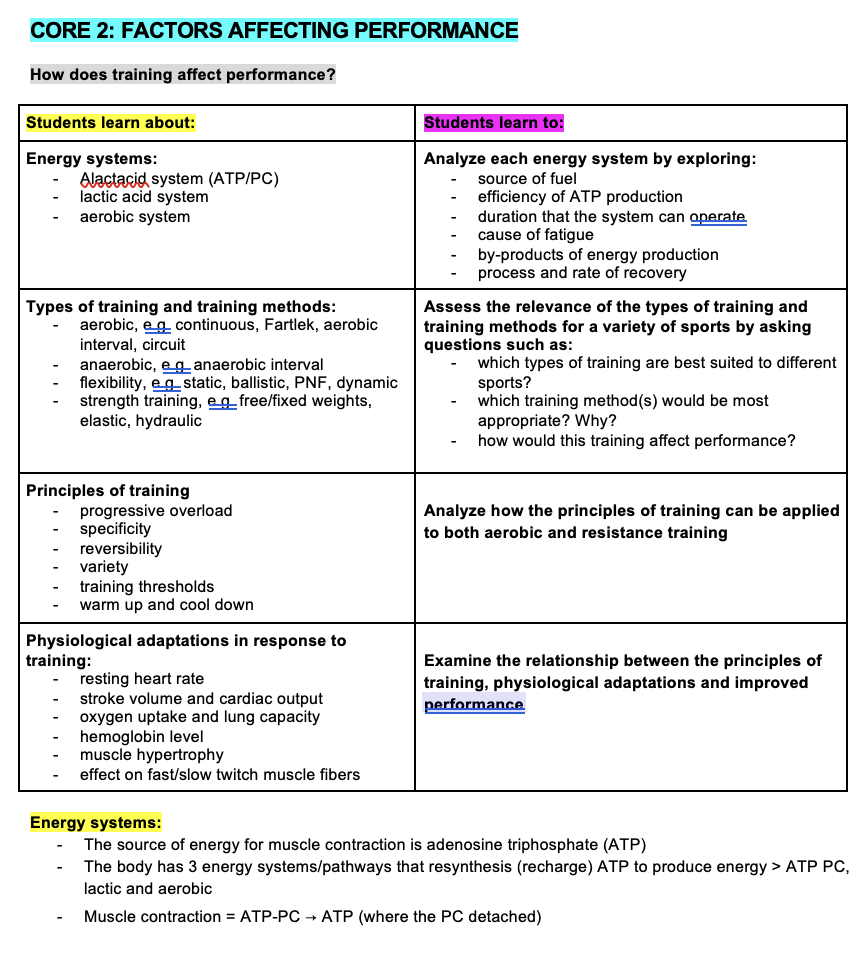Energy Systems and Training Methods PDHPE Core 2 HSC
Summary:
The PDHPE Core 2: Factors Affecting Performance covers various outcomes and concepts related to physiology, training approaches, and performance enhancement. Students learn about energy systems (ATP-PC, lactic acid, aerobic), types of training methods (aerobic, anaerobic, flexibility, strength), principles of training (progressive overload, specificity, etc.), physiological adaptations to training, and more.
Excerpt:
Energy Systems and Training Methods PDHPE
Core 2: Factors affecting performance
Outcomes:
A student:
- H7: Explains the relationship between physiology and movement potential
- H8: Explains how a variety of training approaches and other interventions enhance performance and safety in physical activity
- H9: Explains how movement skill is acquired and appraised
- H10: Designs and implements training plans to improve performance
- H11: Designs psychological strategies and nutritional plans in response to individual performance needs
- H16: Devises methods of gathering, interpreting and communicating information about health and physical activity concepts
- H17: Select appropriate options and formulates strategies based on a critical analysis of the factors that affect performance and safe participation.
CORE 2: FACTORS AFFECTING PERFORMANCE
How does training affect performance?
| Students learn about: | Students learn to: |
| Energy systems:
– alactacid system (ATP/PC) – lactic acid system – aerobic system
|
Analyse each energy system by exploring:
– source of fuel – efficiency of ATP production – a duration that the system can operate – cause of fatigue – by-products of energy production – process and rate of recovery |
| Types of training and training methods:
– aerobic, e.g. continuous, Fartlek, aerobic interval, circuit – anaerobic, e.g. anaerobic interval – flexibility, e.g. static, ballistic, PNF, dynamic – strength training, e.g. free/fixed weights, elastic, hydraulic |
Assess the relevance of the types of training and training methods for a variety of sports by asking questions such as:
– which types of training are best suited to different sports? – which training method(s) would be most appropriate? Why? – how would this training affect performance? |
| Principles of training
– progressive overload – specificity – reversibility – variety – training thresholds – warm up and cool down |
… |
| Physiological adaptations in response to training:
– resting heart rate – stroke volume and cardiac output – oxygen uptake and lung capacity – haemoglobin level – muscle hypertrophy – effect on fast/slow twitch muscle fibres |
…
|


Reviews